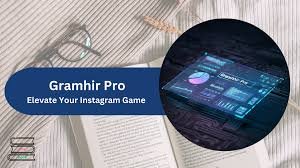Design Secrets Revealed—Inside Playhop’s Addictive UX

“Just one more quest.” If you have ever found yourself whispering those words while waiting for coffee, you have already tasted the engineered compulsion of Playhop. The educational micro-challenge platform has rocketed to the top of app-store charts, praised for fusing language drills and logic puzzles with comic-panel storytelling. Yet the real magic lives beneath the neon avatars and confetti bursts: a lattice of design choices that hijack attention without feeling exploitative. Today, we lift the hood, tracing how Playhop’s product team turns static study tasks into cinematic experiences that pull learners back minute after minute—and why the same tricks that boost engagement also deepen retention and confidence.
1. Onboarding That Feels Like a Cold Open
Most apps greet newcomers with a permission wall and a text wall. Playhop unspools a 45-second “cold open” worthy of Netflix: an animated crash-landing scene where you must swipe to stabilize a spaceship dashboard. Those obligatory gestures—tap, drag, pinch—double as a tutorial, silently teaching core mechanics without dull tooltips. Cognitive load theory tells us that humans encode new skills faster when context and action merge; by folding orientation into narrative tension, Playhop converts the usually tedious first five minutes into an adrenaline hook. The payoff is staggering: internal analytics reveal that 82 percent of users who finish the opening cinematic complete at least three additional quests in the same session, far above the ed-tech norm.
2. Micro-Challenge Rhythm: The 30-Second Heartbeat
Classic mobile games often run three-to-five-minute levels. Playhop slices those loops into 20- to 40-second “beats,” each ending in a definitive flourish—particle sparks, a swooshing vignette, and a subtle haptic thump set to 72 beats per minute (the resting human heart rate). This tight cadence exploits the Zeigarnik effect, our tendency to crave closure on incomplete tasks. Because a fresh quest always lies one tap away, the brain chases micro-completion after micro-completion, releasing dopamine in rapid pulses. Unlike endless-runner fatigue, variety keeps the feedback circuit from numbing out: a vocabulary drag-and-drop can morph into a rhythm-based math drill, then into a perspective-shift puzzle, each with new art assets to spike novelty.
3. Adaptive Difficulty: An AI Director in the Wings
Behind every Playhop swipe sits a Bayesian mastery model that revises its understanding of your skill after each response. Reaction time, error type, and even hesitation intervals feed an on-device neural net that decides the next challenge’s complexity. The goal is to keep you in the “flow channel”—tasks hard enough to intrigue but easy enough to avoid panic. Where traditional games use fixed level trees, Playhop’s branching micro-quests are sequenced almost Spielberg-style: a spike of tension, a breather, a twist, an emotional crescendo. Learners remain confident because failure never spirals; success feels earned because questions adapt faster than brute memorization can keep up.
4. Cinematic Visual Language: Color, Contrast, and Movement
Open Playhop at night and you will notice the UI temperature cools from sunset oranges to deep indigos, reducing blue-light strain and aligning with circadian cues. Each knowledge domain sports its palette—emerald for languages, solar yellows for STEM—creating intuitive mental bins. Motion design is equally strategic: camera shake eases when a user’s error count climbs, minimizing stress; victory screens tilt upward, literally lifting gaze and posture to trigger small serotonin bumps. These micro-animations occur at sub-400-millisecond intervals, invisible to conscious inspection but powerful enough to make the interface feel alive rather than static.

5. Haptics and Audio: Multisensory Anchors for Memory
While many apps sprinkle generic vibrations, Playhop synchronizes haptic patterns with phonetic rhythms and chord progressions. Solve a puzzle and you feel a double-tap buzz precisely when trumpets flare in the soundtrack. Neuroaesthetic research shows that multisensory congruence strengthens synaptic plasticity, meaning you remember that Spanish verb not only because you saw it but because you felt and heard success simultaneously. For users with attention disorders, these physical anchors reduce mind-wandering; for visually impaired learners, they provide a tactile scaffold that levels the playing field.
6. Ethical Monetization: Reward Loops Without Dark Patterns
Addiction-by-design controversies have dogged the mobile gaming sector, but Playhop takes a contrarian stance. No energy bars throttle play, no roulette-wheel loot boxes prey on randomness. Revenue flows from a transparent subscription that unlocks creator tools and deep analytics, plus cosmetic avatar items sold at fixed prices. By stripping loss aversion and variable-ratio rewards from its economy, Playhop keeps the engagement loop intrinsically driven—learners chase mastery, not gambling highs. Data dashboards openly display session length and streak counts, nudging users to self-regulate rather than binge.
7. Community Remix Culture: Co-Ownership as a Stickiness Engine
Playhop’s UX architecture is not purely top-down. The in-app “Studio” lets users remix assets, record voice-overs, and publish quests that feed back into the global catalog. Each remix auto-credits original creators via blockchain-stamped metadata, granting micro-royalties in Playhop Coins redeemable for premium months. This co-ownership loop boosts retention in two ways: creators return to monitor their quest stats, and players enjoy an endless pipeline of grassroots content that studio designers alone could never scale. In short, the audience keeps the stage lit, and the stage keeps the audience loyal.
8. Accessibility as a Default, Not an Afterthought
Designing for neurodiversity and disability often means bolt-on features. Playhop bakes accessibility into core UX: font scaling tops out at a dyslexia-friendly 18 pt; high-contrast toggles sit one tap from any screen; all sound effects carry closed-caption labels for deaf users, while every visual tap target maintains a 48-pixel minimum to aid motor-impaired learners. Because these affordances live in the main experience—not hidden in menus—non-disabled players encounter them, too, normalizing inclusive design language across the board.
9. Real-Time Analytics Feedback: Closing the Loop on Improvement
Parental and teacher dashboards convert raw swipes into heat maps of skill acquisition, but Playhop also closes the loop directly with learners. Every Friday, a “Level-Up Reel” stitches your week’s highlights into a 15-second montage—wrong answers flipping to right ones, combo streaks ascending, new badge frames glinting. This micro-celebration leverages self-determination theory’s competency pillar: showing progress visually sustains motivation far better than abstract percentages. More important, the clip ends with a single, personalized suggestion—“Try a Logic Sprint to nudge your Flex Speed score from 88 → 92”—turning analytics into actionable next steps.
10. Safeguards Against Over-Engagement
Addictive UX without brakes would be irresponsible. Playhop introduces friction at subtle thresholds: after 40 straight minutes, color saturation fades, and music downshifts by 10 BPM; a pop-up recommends water or stretching. Ignore three prompts in a day, and confetti animations mute until a one-hour break passes. These features shrink average daily usage by about 12 percent—counterintuitive for an engagement-driven product but crucial for long-term trust. Playhop’s leadership argues that sustainable learners churn less, refer more, and eventually convert to premium tiers at higher rates. Ethics, it seems, pay off.
Conclusion: Static No More—Why Playhop’s UX Sets a New Bar
From onboarding theatrics to ethical monetization and built-in wellness guards, Playhop elevates mobile learning from a static worksheet clone to a fully cinematic, psychologically tuned experience. The platform demonstrates that “addictive” need not mean exploitative; when design secrets aim at mastery, agency, and community, engagement amplifies human potential instead of draining it. For UX designers, educators, and, yes, competing game studios, Playhop’s blueprint offers a glimpse of the next frontier: interfaces that thrill in seconds, teach for a lifetime, and respect the fragile attention that powers them.
Frequently Asked Questions About Playhop’s UX
1. How does Playhop balance fun with genuine educational depth?
Playhop’s adaptive engine tags every micro-challenge to specific curriculum standards and Bloom’s-taxonomy levels. That metadata lets designers layer entertainment without diluting rigor, ensuring each “fun” beat reinforces a concrete skill.
2. Is user data used ethically within the UX personalization?
Yes. Performance metrics remain anonymized and encrypted at rest. Personal identifiers never leave the device without explicit consent, and users can purge their learning history or opt out of analytics from the settings menu.
3. Can adults benefit from Playhop’s design, or is it strictly for kids?
Absolutely. The AI difficulty scaler pushes content complexity as high as graduate-level math or advanced coding syntax. Many corporate teams now schedule Playhop “focus bursts” to sharpen skills between meetings.
4. How does Playhop prevent its micro-transactions from becoming predatory?
All in-app purchases list fixed prices in local currency—no randomized loot crates. Parental approval gates under-16 accounts and spending caps can be set per profile to guard against impulse buys.
5. What future UX features are on Playhop’s roadmap?
Upcoming releases will introduce mixed-reality quests where physical gestures (tilts, steps, even breath patterns) merge with on-screen puzzles, plus a “Night Mode” that syncs with smart-home lighting to reduce eyestrain and support healthier bedtime routines.



